Martin Patrick – 4 October, 2012
Todd in an interview with Robert Leonard spoke of being more interested in Priscilla Presley than Elvis, which in turn spurred me to recall the pop band the New Pornographers once stating that they were more influenced by Wings rather than the Beatles. This gets at something quite telling about popular culture, and that is the fact that it is always contextually dependent, and its being linked with personal associations carries it into a corresponding state of overidentification.
Some photographs scare me. Not only the ones that are blatantly, indisputably frightening, such as glimpses of horrific atrocities, crimes and disasters, but those that are troubling in their implications, allusions, and for what is not directly portrayed. Corporate photography has had that troubling quality for me, the depictions that glare out at you from lightboxes in airports and bus stops and other rather generic and transitory (non-)spaces. So it is with some of the photographs of artist Yvonne Todd, I discover that they can occupy a status that seeks to be seductive and disturbing, ambiguous yet threatening, and ultimately perplexing and compelling.
I would like to present a series of observations in which metonymically, we can perhaps treat the component parts and facets of Todd’s work as a way towards grasping the tremendously elusive whole. And in thinking of Todd’s various photographs and series I have the feeling of a kind of whirlwind tour of ancient and current pop culture, amalgamated into stranger, densely refracted patterns, as if looking at one’s reflection in some crumpled up glittery wrapping paper. And the notion of artifice and surface is crucial, if Andy Warhol once stated that all one needed to know about him lay on the surface, Todd’s work is a kind of skimming over synchronous yet dissimilar repositories of cultural knowledge.
Many of Todd’s photographs feature models offering a seemingly affectless gaze, garbed in rather antiquated and antiseptic clothing. Wigs are ubiquitous along with many other types of prop. Much as in the photographic lexicon of wholesale catalogues, corporate reports and the traditional school portrait, the atmosphere is cool, and deceptively calm. In choreographing and reconfiguring these types of images, Todd offers an alternative reading of the photographic tropes visible in most everyone’s salon, wallet, bedroom, office desk.
It’s difficult not to allow Todd’s microcosmic universe to summon associative links with all manner of related and not so related cultural artifactoids. Perhaps this is owing to the fact that despite an almost strict internal consistency to the manner in which her photographs are created, they take their inspiration from a wide ranging circuit of (once-)popular phenomena. As the artist herself has noted her avowed interest in “the irrelevant and obscure” as well as “the pathetic.” When Todd reaches toward the past it is often a de-familiarized, not entirely welcoming place, characterized by uncanny intersections that remain brittle, fierce, spiky. It’s perhaps also because the very constructed and spooky veneer of the photographs, so shiny and almost perfect, ultimately directs us toward the converse: entropic decline, distortion, and decay.
Todd in an interview with Robert Leonard spoke of being more interested in Priscilla Presley than Elvis, which in turn spurred me to recall the pop band the New Pornographers once stating that they were more influenced by Wings rather than the Beatles. This gets at something quite telling about popular culture, and that is the fact that it is always contextually dependent, and its being linked with personal associations carries it into a corresponding state of overidentification. Why did I love this and not that? When did I become invested in this cultural production that for all intents and purposes has absolutely nothing to do with me, nor my own actual experience? And sometimes these are the products we obsess about and clutch all the more tightly for that very distancing and remove.
Exhibit A: hair and apparel: I remember a few things from my own experience growing up in the southern United States and that was the local broadcasts of country western music on endless weekend afternoons, when Dolly Parton was but a whelp and the protégé of the singer Porter Wagoner. Parton’s later activities have become the stuff of pop fluff legend, but back then she was closer to the small town girl with a fantastic beehive. Having this kind of glitz gazing back at you from a staticky television with aluminum foil on its rabbit ears was an intense experience.
Of course I think of other examples of hair and wigs: more country and western stars, the MTV bands of the 80s, Warhol himself, actress Chloe Sevigny’s star turn as a Mormon polygamist’s wife on the American cable melodrama Big Love, Hitchcock’s so-called cool blondes such as Grace Kelly, Tippi Hedren, Eva Marie Saint, and Kim Novak. And Todd speaks nostalgically of the escapism of television in the era of The Love Boat and other vapid yet inviting vehicles for fantasies. And beyond Hitchcock the paradigmatic figure early on of adopting popular cinema as high art, I think of Roger Corman’s drive-in style exploitation films or the British Hammer productions or Andy Warhol/Paul Morrisey’s camping up of horror films over the course of the 1960s and 70s. I think of Pretty Poison in which Anthony Perkins, rather than seeming as deranged as Psycho’s Norman Bates, becomes a mere accomplice to the entirely sick and depraved young Tuesday Weld. I was also thinking of my grandmother who, a voracious reader, loved two particular genres true crime and romance, such that one day she might be immersed in Margaret Mitchell or Barbara Cartland, the next narratives of Ed Gein or the Manson clan.
Roland Barthes’s classic essay “The Romans in Films” equally comes to mind, as when the author dissects the faulty construction of verisimilitude in Hollywood epics of the 1950s from the fringe upon Marlon Brando’s forehead to: “yet another sign in this Julius Caesar: all the faces sweat constantly. Labourers, soldiers, conspirators, all have their austere and tense features streaming (with Vaseline). And close-ups are so frequent that evidently sweat here is an attribute with a purpose. Like the Roman fringe or the noctural plait, sweat is a sign. Of what? Of moral feeling. Everyone is sweating because everyone is debating something within himself; we are here supposed to be in the locus of a horribly tormented virtue, that is, in the very locus of tragedy, and it is sweat which has the function of conveying this.”
Todd has frequently rhapsodized with passion and curiosity about various aspects of dated visual culture, as in a 2008 interview with curator Natasha Conland: “I’m inspired by professional photography trade magazines from the pre-digital era. I especially like food photography, because everything is so fake and inedible. There are fascinating props available to commercial product photographers, like acrylic and clear rubber ice cubes, extremely realistic-looking food made of resin, “nurdles” of perfectly formed faux toothpaste, glass soap bubbles and smoke pellets.”
Todd also addresses the false frontality of staged realities in photography, cinema, and other spectacular realms, the fact that we might be staring at a mere scrim, a backdrop, an assortment of painstakingly created but flimsy and lightweight props. Such a constructed reality creates the illusion of weighty significance and status.
Many years ago I worked for a commercial portrait photographer near Washington DC, who exhibited a true rogues gallery on the walls of his suburban studio, images of those who walked the governmental corridors of power or tyrannically ran smallish countries. What’s the difference really? To be locked up so to speak in a small darkroom conjuring up smiling, soft faces out of the chemical trays - that was my job - was as claustrophobic an experience as staring into the posturing eyes of the senators and dictators hung in the entryway. Defined by a certain emptiness they still seemed to scream: this is an important image, pay attention!
In Todd’s images, a major question becomes how to use the cliché wisely and in so doing turn that cliché into something entirely different. She has commented: “I’m not affronted by clichés, visual clichés are great. Images like roses with dewdrops still have lots of mileage, as far as I’m concerned. For me it’s about creating archetypes. I might not actually photograph a rose ever again, but at least I can entertain the idea. And I like borrowing tired, unfashionable photographic techniques, like those used in family portrait studios-the soft-focus Vaseline effect. I might use a star filter next.”
But beyond the clichés is how to reinvoke and reinterpret historical references of wildly divergent forms, functions, and temporalities. For example Wall of Seahorsel riffs on such material as Richard Avedon’s fashion photographs, the work of the French mime Marcel Marceau, and the 19th century chronophotographs by Eadweard Muybridge. Perhaps although these reference points might initially appear totally distinct from one another there is also the thread of quietude, that the sometimes over the top poses are frozen, devoid of the movement and soundtrack that might break the disorientating atmosphere, and reduce it to mere slapstick. However slapstick, mime, technological innovations in photography can all become incredibly artful mechanisms of expression.
As the artist has remarked:
“Erratic behavioural mechanisms and scrambled frequencies are imbued with elements of both frivolity and blankness. The movements allude to a communal (perhaps unhinged) state of mind; the execution of obscure processes; the carrying out of unnamed and unknown tasks. To feed this sense of the indiscernible, the action takes place amid a selection of beach detritus, so there’s sand, seaweed, a large seashell, a seagull, and a wet rag. Yes, it’s different from my typical style; I wanted to produce something that had a more experimental quality. But it’s new work and I haven’t yet fully digested the implications. It still inhabits a nebulous zone in my mind.”
Todd’s methodology still entices (or of course perhaps repels) due to its manifold uncertainties, the quality of unease that emanates simultaneously with the notion that the blunt visual fact described with precision becomes captivatingly strange. If in much fashion photography and commercial set ups the lurid and darkly erotic is meshed with high key lighting and a shimmering banality, Todd reframes these very framing devices, making her approach on one hand a conceptually sophisticated metalanguage and on the other offers a dumb and straightforward theatricality.
Writer Megan Dunn has eloquently stated that Todd:
“is well known for her perpetrations of anxiety and angst, her work frequently noted for its ‘not quite rightness.’ In Seahorsel Subset the artist turns her attention to signs of soul searching, that elusive state of inner calm, tranquility. The inhabitants of this exhibition could be the members of a sect or a commune. In their white and beige outfits, the seventies chic of their billowing sleeves conjures up a whiff of Californian dreaming.”
So it is with Todd that in her vision communes co-exist with cults, Romance novels with tabloid blurbs, and modern dance with soft core pornography. The markedly pronounced shifts present in the artist’s work between various registers of meaning, whether visual, conceptual or psychological keeps a strong momentum but does not let up on a certain confusion and disequilibrium amidst the supposed calm. When I look at the imagery of Todd’s Seahorsel, I think of Merce Cunningham and Trisha Brown in the same breaths as the stage outfits of magicians, country singers, sci fi protagonists, and glam rockers.
Furthermore, the artist’s attitude intrigues in that once upon a time to ironically skewer kitsch was regarded as transgressive, but what’s important to remember is that so many artists who really engage on a strong and telling level with mass culture, LOVE IT TO DEATH, so that the placing of the discarded, castaway bits and pieces of consumer culture into Todd’s tableaux can be read as an act of affection rather than disdain. This is arguably why Warhol has stayed a figure of fascination: his rapt attention and near worship of the materials he really wasn’t directly critiquing. And we see this love and attention lavished across the virtual blogosphere, in the collected fascinated ruminations of countless amateur historians and aficionados of subcultural detritus. But in Todd’s case instead of simply RE-presenting such artifacts, she uses them as fuel to create new flames of meaning, unlikely to be extinguished anytime soon.
Martin Patrick
A variant on this essay was delivered at the Dunedin Public Art Gallery as part of their public program series on 22 September 2012.
Recent Comments
harry rickit
A little breathless. Todd is interesting though, and always worth a longer second look.
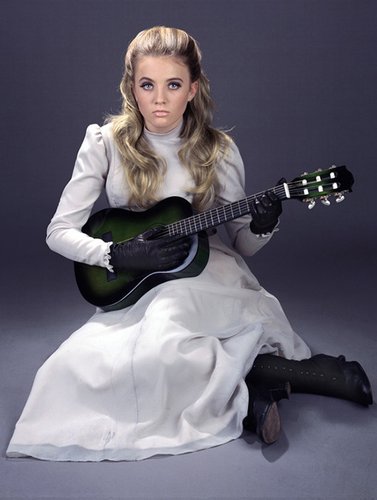
 Two Rooms presents a program of residencies and projects
Two Rooms presents a program of residencies and projects Advertising in this column
Advertising in this column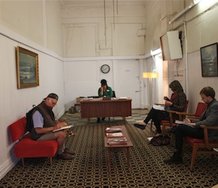
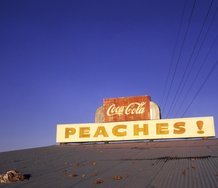
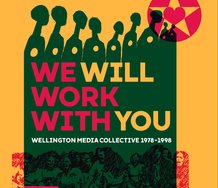
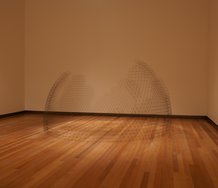
This Discussion has 1 comment.
Comment
harry rickit, 3:21 p.m. 17 October, 2012 #
A little breathless. Todd is interesting though, and always worth a longer second look.
Participate
Register to Participate.
Sign in
Sign in to an existing account.